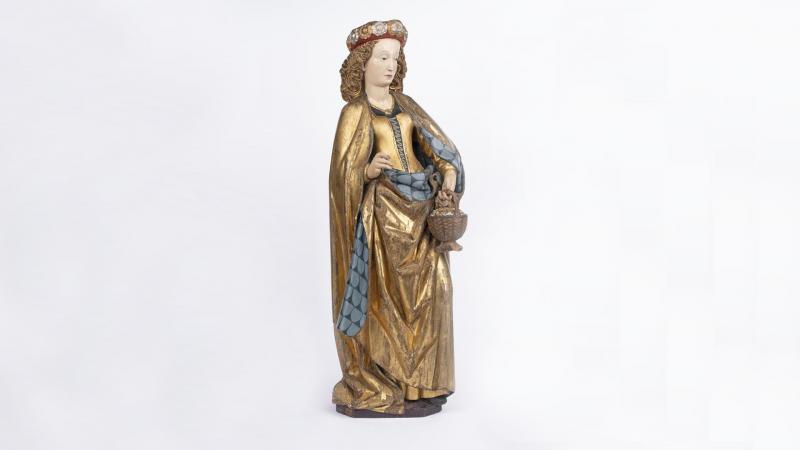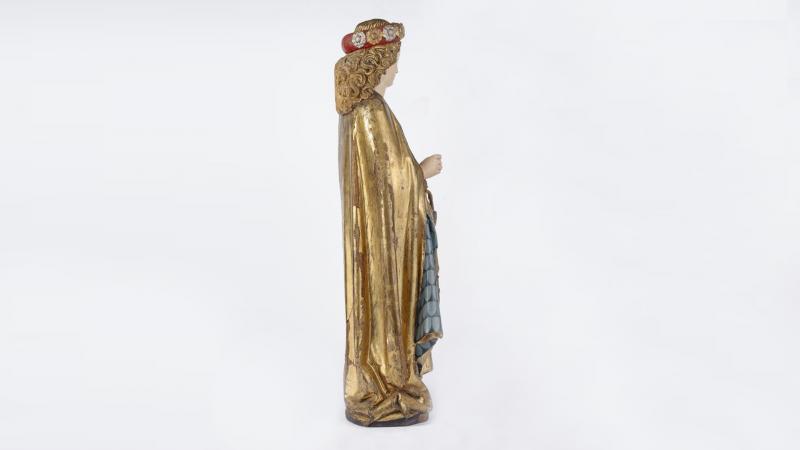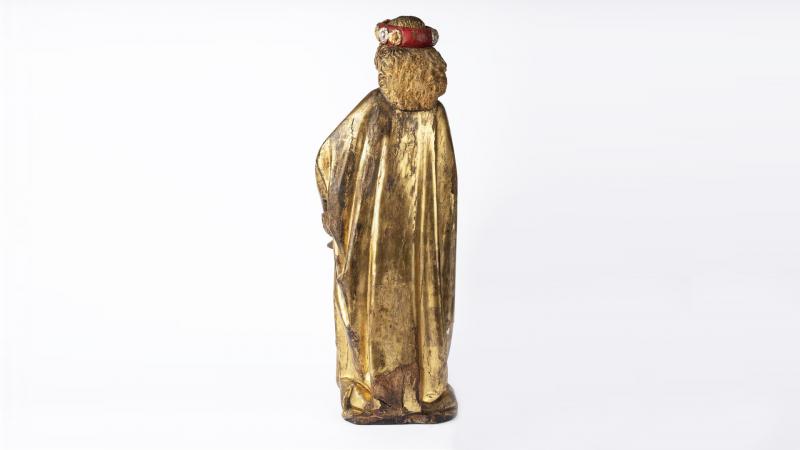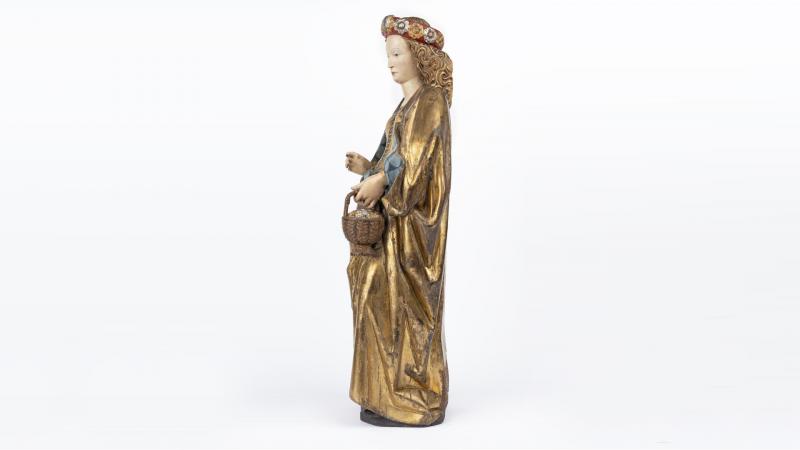This charming sculpture, which has renewed, but desperately fragile, polychrome, represents the martyred Virgin Dorothea, originally from Cappadocia (Asia Minor). An ardent and virtuous Christian, she died at the beginning of the 4th century AD, during the persecutions of the Roman emperor Diocletian (244–311).
Legend indicates that she was subjected to various forms of torture, which she endured with joy, before finally being decapitated. While being led to the final torture, the pagan Theophilus derisively asked Dorothea to send him "fruits or roses from the Garden [paradise] of her Husband [Christ]". After the saint's prayer, Theophilus received, from a child who miraculously appeared, fruits and flowers; he was converted on the spot.
Saint Dorothea has been venerated since the 7th century; her cult spread in the late Middle Ages, mainly in Italy and Germany. Curiously, she is almost unknown in the Eastern Church. She is celebrated on 6 February. She is the patron saint of gardeners, florists, brewers and newly-weds.
The statue presented here, which is dressed in a garment with broken-up pleats, depicts the typical attributes of the saint: the crown of flowers on her head, the rose in her hand (lost) and her basket of flowers and fruits.
From a more technical point of view, this sculpture is an example of what happened to many 15th-century pieces in the second half of the 19th century: they were stripped of their original polychrome, then coloured anew to suit Neo-Gothic tastes. Unlike the polychromes of the Middle Ages, neo-Gothic polychromes were characterised, in essence, by less subtle patterns applied in an almost solid fashion. However, the implementation and style are consistent with what was happening in the Middle Ages. Only the nature of some of the materials has changed, such as, for example, the pigments.



